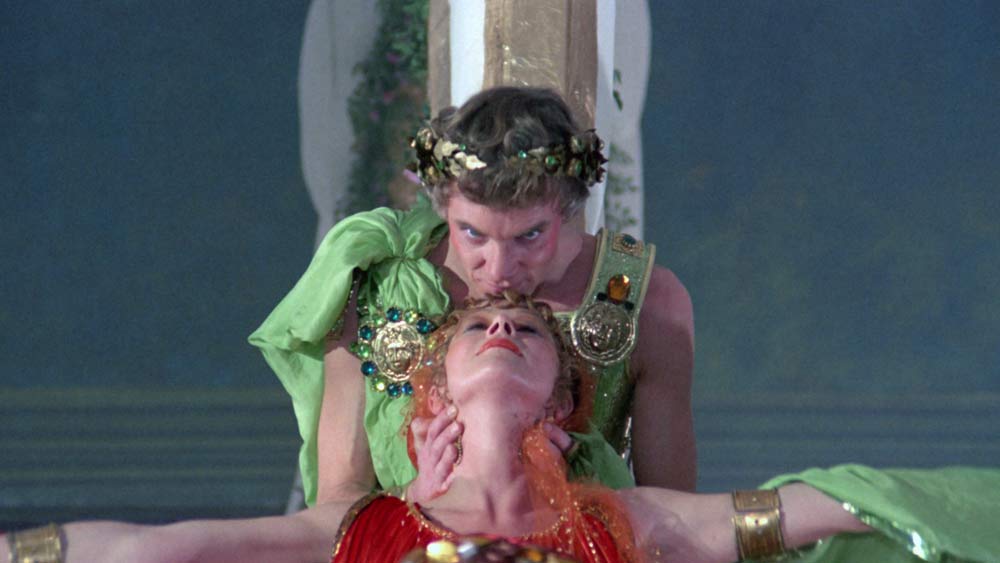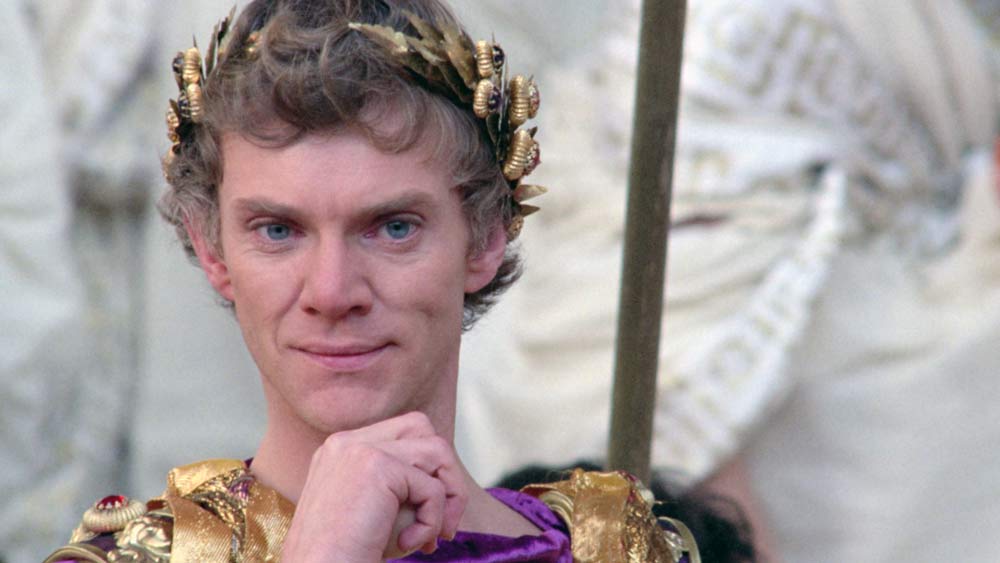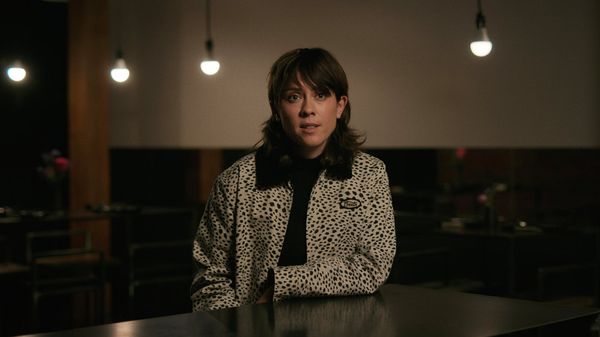
Sep 11
What To Do With an X-Rated Camp Classic? Film Historian Thomas Negovan Says Reconstruct It
Kilian Melloy READ TIME: 10 MIN.
No one was happy with the X-rated "Caligula" when it was released in 1980. The filmmakers and cast disowned it, and the critics dismissed it. Audiences came to see this expensive curiosity, but was there a decent movie in all the chaos? Filmmaker Thomas Negovan finds an answer in his new version taken from copious unseen footage.
"The thing that I leaned into was the idea that this was a metaphysical fable," filmmaker and historian Thomas Negovan tells EDGE about his painstaking, years-long reconstruction of the infamous – and infamously explicit – film.
"This is not a historical film," Negovan continues. "There are no three-story decapitation machines in ancient Rome. You have to buy into this like it's modern opera, very creative avant garde opera. Getting into that mindset is what really made it work."
Opera, indeed, complete with soaring passions and exaggerated storytelling. "Caligula" is a movie of lust and lunacy, dictatorial impulses gone haywire in a crumbling republic, and maneuvers in the imperial court that are as ruthless and ambitious as those in the bedchambers of the powerful. Starring Malcolm MacDowell and Helen Mirren, among other top British talent, the 1980 movie was Penthouse publisher Bob Guccione's attempt to fuse serious storytelling, top-shelf production, and raw human sexuality into an arthouse monolith unlike anything ever seen before.
In a way, he succeeded; the result, with a not-entirely-followed script by Gore Vidal, direction by acclaimed Italian filmmaker Tinto Brass, cinematography by Silvano Ippoliti, and astonishingly sumptuous, somewhat surrealistic sets, was a notorious curiosity, a kind of swords and sandals epic that Ed Wood might have made, though replete with hard-core porn that Guccione, wanting to amp up the sex quotient, added after Brass completed principle photography and left the project.
There's still an element of that absurdism and lack of filmmaking polish in Negovan's from-the-ground-up re-creation of the film, titled "Caligula: The Ultimate Cut," partly because of touches like the "decapitation machine" Negovan mentions – a monstrous moving wall with lawnmower-like scythes that lop off the heads of condemned men. But much of the film's strangeness is the result of its lingering concupiscence: Background extras engage in unsimulated sexual acts that seem random and, divorced from any sort of erotic context, devoid of any spark of lust.
Negovan's new cut is a vast improvement over the original, and that has to do with his meticulous work in deleting needless hardcore footage and combing through more than 100 hours of material in order to identify superior takes that were let unused, as well as to add in footage that was overlooked but that advances the story and the characterizations. (That said, this is still a movie that offers us saucy full-frontal glimpses of a young Malcolm MacDowell, not to mention steamy scenes of Romans going about their famed orgies.) At the end of all that hard work, Negovan has ended up with a version of the movie that's 100% comprised of footage that had never been seen before the film's 2023 premiere at Cannes. He's also commissioned a fresh new score by Troy Sterling Nies to accompany the film's striking visuals (those massive sets, by Oscar-winning designer Danilo Donati, fill the screen this time around!).
The new version of "Caligula" hit theaters across the country last month; Blu-ray and 4K UHD home editions follow on Sept. 17, with a VOD release to follow in October. One of film history's most monstrous mistakes has finally been set as right as it ever could be. EDGE spoke with Thomas Negovan to lean more.

EDGE: The film was more than 40 years old when you undertook to restore and recut it. What prompted this restoration effort?
Thomas Negovan: Penthouse had changed hands multiple times since Bob Guccione's day, and the new owners were aware that they held this storage space filled with these dusty boxes, and they called me in to look at it. The basic question was, "Is this interesting? Is there anything here that something could be done with?"
To say that I reacted strongly would be an understatement. I had heard the legends of how the creators of the film had always felt betrayed by the Bob Guccione release, and so the part of me that loves a good mystery felt like, "Oh my gosh, the answers are in here."
EDGE: Were you a fan of the original cut?
Thomas Negovan: Absolutely not! I was too big of a Malcolm McDowell fan, and he had been stating in interviews since I was a kid, "Don't go see that movie, it's absolutely terrible." Like a good fan, I listened, and so I had never seen it. I did not watch the film until I was well underway with my own work, so that I could keep a very neutral and fresh idea as I was researching and listening to interviews and reading old articles and trying to build a kind of forensic/archeological view of the landscape.
EDGE: The original cut had a lot of gratuitous stuff in it that Bob Guccione threw in after the original director, Tinto Brass, had completed production, but all that is gone from your cut. Was that choice to honor the original vision of Tinto Brass, or did you feel that it was not necessary for the movie?
Thomas Negovan: Coming into this, I listened, I read everything and listened to every interview that any of those men, Gore Vidal, Bob Guccione, Tinto Brass, Malcolm McDowell, anything anybody said about the movie. Then I put a flag right in the middle and said, "Okay, how do you find a way to respect all the parts of this?"
Bob Guccione wanted a sexy spectacle film that was also a piece of art cinema. He hired two-time Academy Award winner Danilo Donati to do these unbelievable sets. Gore Vidal was saying that he wanted an accurate view of Rome, and a treatise on the corrupting influence of power, but on the other hand his script didn't reflect some of that. Tinto and Malcolm were sculpting a narrative that did introduce more of a dynamic of the way that power was corrupting. I was able to arbitrate between these four parties, and then at the end what's in the can and what was filmed were the boundaries of what we could work with.
Ultimately, the decisions that were made were all based on supporting Caligula's character arc, as exhibited through the performance sculpted by Malcolm McDowell. I believe it's one of the best performances he ever gave. The depth and breadth of it are vast and powerful, and then you add in the fact that Helen Mirren is very present in the second act, but really supports the third act. The idea, then, of what's gratuitous – you don't even have time to discuss that, because you're focused on making a good movie.
Kilian Melloy serves as EDGE Media Network's Associate Arts Editor and Staff Contributor. His professional memberships include the National Lesbian & Gay Journalists Association, the Boston Online Film Critics Association, The Gay and Lesbian Entertainment Critics Association, and the Boston Theater Critics Association's Elliot Norton Awards Committee.







